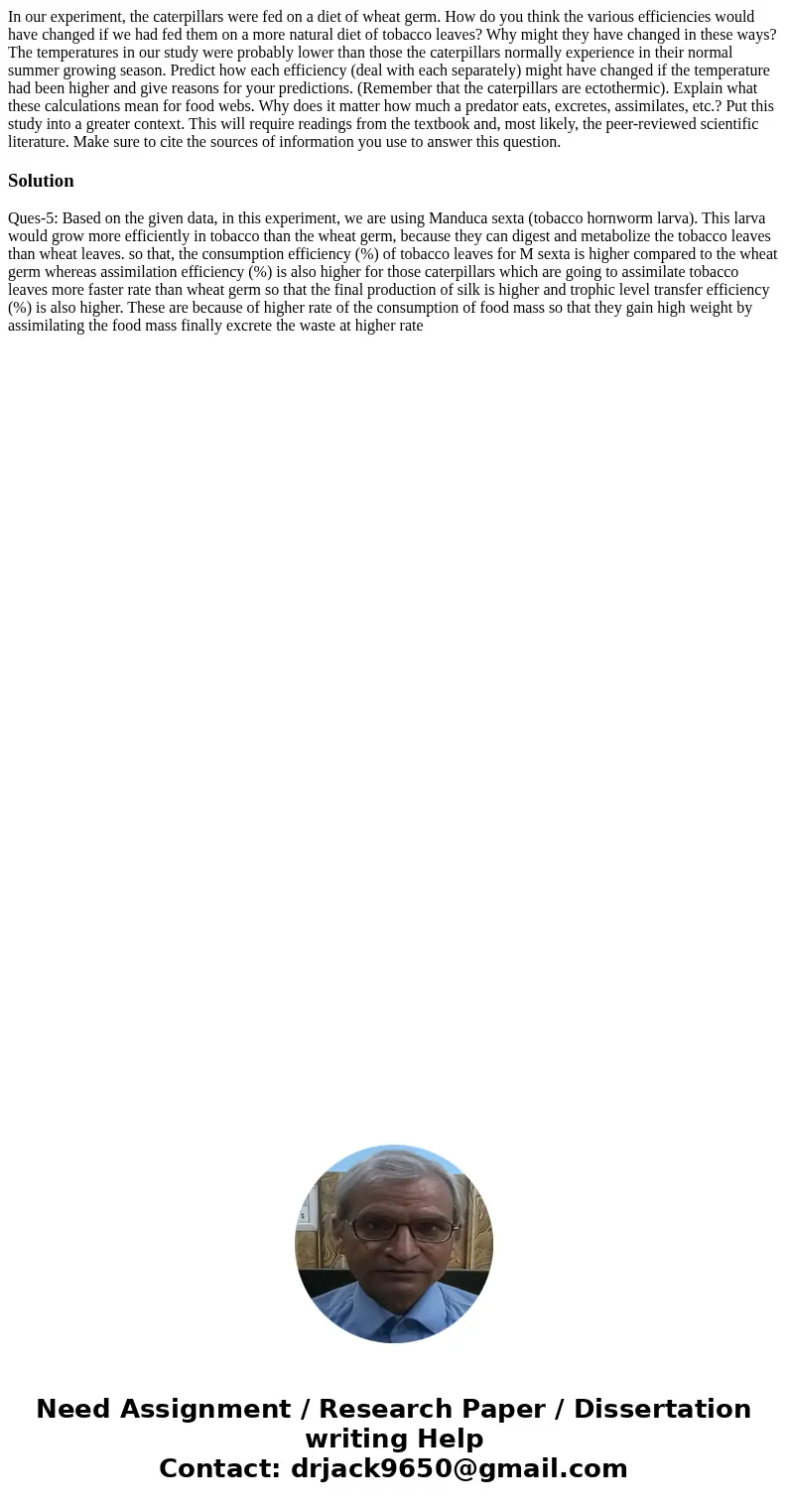In our experiment the caterpillars were fed on a diet of whe
Solution
Ques-5: Based on the given data, in this experiment, we are using Manduca sexta (tobacco hornworm larva). This larva would grow more efficiently in tobacco than the wheat germ, because they can digest and metabolize the tobacco leaves than wheat leaves. so that, the consumption efficiency (%) of tobacco leaves for M sexta is higher compared to the wheat germ whereas assimilation efficiency (%) is also higher for those caterpillars which are going to assimilate tobacco leaves more faster rate than wheat germ so that the final production of silk is higher and trophic level transfer efficiency (%) is also higher. These are because of higher rate of the consumption of food mass so that they gain high weight by assimilating the food mass finally excrete the waste at higher rate

 Homework Sourse
Homework Sourse